SPECIAL OPERATIONS EXECUTIVE (SOE) FORMED
London, England • July 22, 1940
On this date in 1940 British Prime Minister Neville Chamberlain, encouraged by future Prime Minister Winston Churchill, signed the founding charter of the Special Operations Executive (SOE) organization. For security purposes the SOE’s “cloak and dagger” operations was concealed behind the name “Inter-Service Research Bureau.” (At the time the SOE was variously referred to as “the Baker Street Irregulars” owing to the SOE’s headquarters on that street, “Churchill’s Secret Army,” or the “Ministry of Ungentlemanly Warfare.”) The SOE was inspired by Churchill’s fascination with covert intelligence gathering and guerrilla/irregular warfare (going as far back as his 1895 stint as a war correspondent during the Cuban uprising), and it was modeled on the Irish Republican Army (IRA) during the troubles in Ireland (1916–1921).
Perhaps more than any other political leader of his age, Churchill shrewdly valued good intelligence and its wise application to affect the outcome of any struggle; e.g., the use of Ultra (German Enigma decrypts) during the North African campaign and more famously during the Battle of the Atlantic. Hence Churchill’s dual charge to SOE operatives: conduct espionage, sabotage, and reconnaissance in enemy-occupied (or sometimes neutral) Europe, and aid local resistance movements against their Axis occupiers. (Volunteers who were engaged in small- to battalion-size guerrilla operations behind enemy lines were employed in the Special Service Brigade [later British Commandos], which was formed a month earlier, in June 1940. The commandos initially drew recruits from British Army regiments and were led by British Army officers.)
Some 13,000 people from all walks of life, among them 3,200 women, found service in SOE’s research, propaganda, commando, and (mostly) clandestine operations, supporting or supplying roughly one million operatives worldwide. Operation Anthropoid was one of the more high-profile operations carried out by SOE operatives—the grenade attack on Acting Reich Protector Reinhard Heydrich in Prague, Czechoslovakia, on May 27, 1942, that mortally wounded him. Heydrich’s death on June 4, 1942, from cardiac arrest stemming from blood poisoning led to a wave of reprisals, including the arrest of 13,000 people, the killing of 5,000 civilians, and the destruction of several Czech villages by German troops.
In 1943, anticipating the Allied invasion of Western Europe (Operation Overlord), the SOE and its American counterpart, the Office of Strategic Services (OSS), formed an institutional and operational alliance. U.S. and British agents and their armed colleagues in the French underground moved from clandestine to overt acts of resistance in defiance of criminal reprisals German soldiers occasionally inflicted on civilian populations; e.g., at Tulle and Oradour-sur-Glane in Central France on June 9–10, 1944, by men of the 2nd SS Panzer Division “Das Reich.” Resistance took many forms, among them sabotaging rail and road networks, classification/marshalling yards, locomotives, bridges, tunnels, and equipment depots throughout France to hinder the Wehrmacht’s ability to deploy, reinforce, and resupply their beachhead defenders, and repel Allied forces from their Normandy lodgment.
The SOE was dissolved officially in mid-January 1945. Some personnel returned to civilian occupations or regular service in the armed forces, but 280 of them found employment in Britain’s MI6’s Special Operations Branch. The OSS suffered a similar though earlier fate in October 1945, and many agents simply shifted their allegiance to the new U.S. Central Intelligence Agency.
Women of Britain’s Special Operations Executive (SOE)
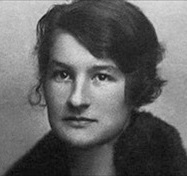 | 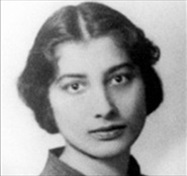 | 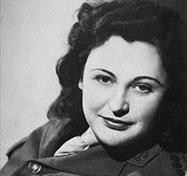 |
Left: Virginia Hall (1906–1982) joined the war against Nazi Germany before her country did. She settled in Paris in 1939 after resigning her job with the U.S. consular service. When war broke out, Hall drove ambulances for the French army, leaving for London after France’s capitulation. There she met Vera Atkins of the SOE’s F (France) Section (see below), who sent her to Vichy France in August 1941. Between working for the SOE and later America’s Office of Strategic Services (OSS) Hall organized French Resistance networks, helped train 3 battalions of Resistance fighters, organized sabotage operations and guerrilla attacks by French partisans, and passed intelligence information on German troop movements to the Allies until France’s liberation in 1944. Hall’s undercover operatives approached 1,500 men and women. (Hall’s activities, like those of other women, violated the Geneva Convention, which forbade females taking on combatant duties.) Hall was made an honorary Member of the Order of the British Empire (MBE) and received the U.S. Distinguished Service Cross, the only civilian woman so honored in World War II. Sonia Purnell recounts Hall’s exploits in occupied France in the New York Times Times 2019 bestseller, A Woman of No Importance: The Untold Story of the American Spy Who Helped Win World War II.
![]()
Middle: Daughter of an American mother and an Indian Sufi mystic who wrote children’s stories, the Russia-born Noor-un-Nisa Inayat Khan (1914–1944) and her family relocated to England before the family moved to France in 1921. Fleeing the invading Germans on one of the last boats leaving for England, Noor signed up with the British Women’s Auxillary Air Force in 1941 and trained as a radio operator. Fluent in English and French, Noor, or Nora as she was now known, was the first female undercover radio operator the SOE sent to occupied France, this in mid-June 1943. Her career was cut short by a French double agent, who betrayed her and her network. Evading capture she was betrayed again and caught, along with her radio, codebook, and a record of all her past messages, by the Germans in mid-October 1943. Refusing to provide any information about her work or other SOE agents, she was mercilessly tortured and executed in her cell in Dachau concentration camp on September 13, 1944. She was posthumously awarded both the French Croix de Guerre in recognition of her contribution to the liberation of France and the British George Cross, the highest civilian award for bravery in Britain.
![]()
Right: New Zealand-born SOE agent Nancy Grace Augusta Wake (1912–2011) became a prominent leader of one of the Maquis bands (rural guerrilla bands) of French Resistance fighters. Nicknamed “the White Mouse” because of her ability to elude capture, Wake was No. 1 on the Gestapo’s most-wanted-persons list, with a five-million-franc price on her head. Between the buildup to D-Day and the liberation of France in August 1944, Wake’s 7,000‑plus maquisards fought 22,000 German SS soldiers, causing 1,400 casualties, while taking only 100 themselves.
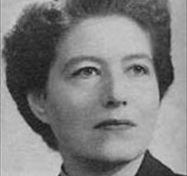 | 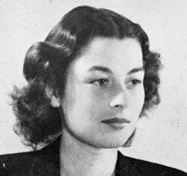 | 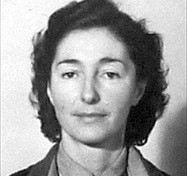 |
Left: Born Vera Maria Rosenberg in Bucharest, Romania, and educated at the Paris Sorbonne, Vera Atkins (1908–2000) was the highest-ranking female official in the French section (F Section) of the SOE, recruiting and inserting hundreds of agents, including 39 female agents, into France. (F Section believed that women blended in better than men in wartime France, especially in Paris where young men were an increasing rarity.) After the war she served as a member of the British War Crimes Commission, gathering evidence for the prosecution of war criminals while also tracing the fate of 118 of her agents who never returned. The French government appointed Atkins Commandeur of the Légion d’Honneur in 1987. Reading an account of Atkin’s search to learn the fate of her missing female agents moved the historical fiction writer Pam Jenoff to write The Lost Girls of Paris, a 2019 New York Times bestseller. William Stevenson wrote Atkin’s biography, Spymistress.
![]()
Middle: A widow after her husband, a captain in the French Foreign Legion, died at El Alamein, Violette Szabo (1921–1945) was recruited into the SOE. Parachuted deep into France on June 7, 1944, her second trip there (her first had been to Cherbourg in April 1944), she was tasked with coordinating the work of the local Maquis in the Limoges area in the first days after D‑Day. She was captured by the German SS, handed over to the Gestapo in Paris where she was interrogated and tortured, and then sent to Ravensbrueck, the notorious women’s concentration camp in Northern Germany, where she was executed in January 1945. She was only 23. For her courage she was posthumously awarded the George Cross and the French Croix de Guerre.
![]()
Right: Polish-born Maria Krystyna Janina Skarbek (1908–1952), who began using the nom de guerre Christine Granville in 1941, was said to have been Churchill’s “favorite spy.” She became a British agent months before the SOE was founded in July 1940 and was one of the longest-serving of all of Britain’s wartime women agents. Parachuted into Southeastern France a month after D‑Day, Granville worked to link Italian partisans and the French Maquis for joint operations against the Germans in the Alps and induce non-Germans, especially conscripted Poles, in the German occupation forces to defect to the Allies. Her exploits were recognized with the George Medal, the Croix de Guerre, and the Order of the British Empire (OBE).
Gladiators of World War II: Britain’s Special Operations Executive (May want to skip first 45 seconds.)
![]()

 History buffs, there is good news! The Daily Chronicles of World War II is now available as an ebook for $4.99 on Amazon.com. Containing a year’s worth of dated entries from this website, the ebook brings the story of this tumultuous era to life in a compelling, authoritative, and succinct manner. Featuring inventive navigation aids, the ebook enables readers to instantly move forward or backward by month and date to different dated entries. Simple and elegant! Click
History buffs, there is good news! The Daily Chronicles of World War II is now available as an ebook for $4.99 on Amazon.com. Containing a year’s worth of dated entries from this website, the ebook brings the story of this tumultuous era to life in a compelling, authoritative, and succinct manner. Featuring inventive navigation aids, the ebook enables readers to instantly move forward or backward by month and date to different dated entries. Simple and elegant! Click 











